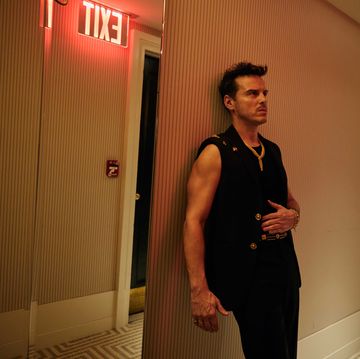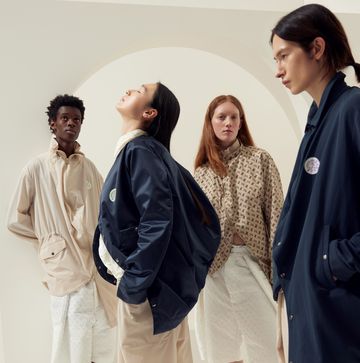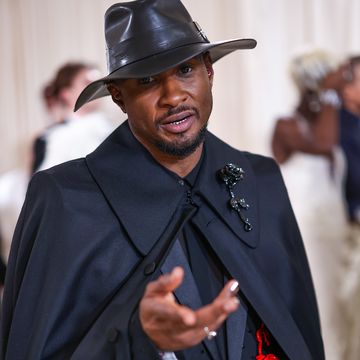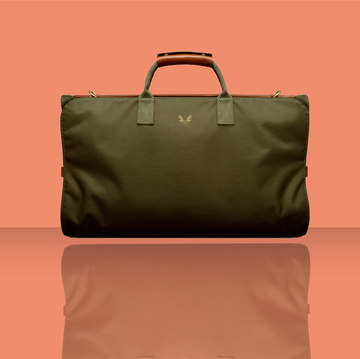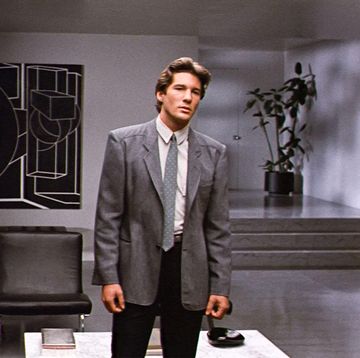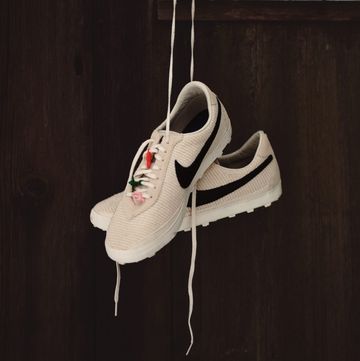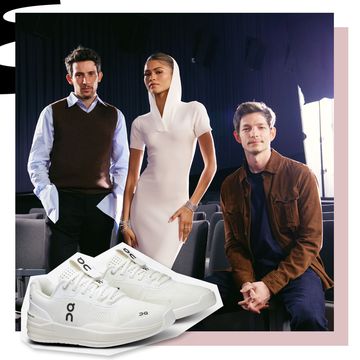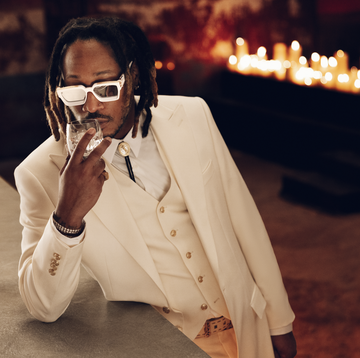The fashion industry is enamoured with big personalities. Of course it is. Left-field shows are often created by extroverted people. From Karl Lagerfeld dressing like a Georgian era diamond dealer to Donatella Versace resplendent in meandros prints and leather, we idolise these icons because they're fun. Getting dressed up is fun.
An appetite for theatre is commonplace, and that's what makes Miuccia Prada all the more unusual. She rarely gives interviews. She eschews the showmanship that has so defined her contemporaries. She’s a woman that keeps her private life just that - and what a remarkable life it has been.
Born Maria Bianchi in Milan, 1949, it was some time before the young Miuccia (so nicknamed after being adopted by an aunt) turned to the family trade of luxury leathers. Instead of training at an atelier, Prada cut her teeth at the University of Milan with a PhD in political science. Then it was onto the famous Piccolo Teatro where she focused on becoming a mime for five years, involving herself with the Italian Communist Party and women’s rights movement in-between. This was not the well-trodden career path of a budding fashion designer.
And it shows. Prada’s roots in academia are well-translated into her work. She makes proper clothes for proper people. They’re intelligent. They fit bodies, as opposed to upending them, and Prada refuses to follow trends set elsewhere. So when brows raise upon flame prints from yesteryear and banana shoes, Prada knows that the same sceptics will happily board her train in six months time. There is no zeitgeist to be followed: no slogan T-shirts, no ‘goth’ revival, no adherence to what everyone else is doing.
What’s more, Prada remains matter-of-fact about her unconventional apprenticeship (or lack, thereof). “Everybody with some brain studied and worked in politics at that time,” she told a lecture hall full of Sunday Times Style readers in 2005. “I was not exceptional.” Taking the steer of her grandfather’s luxury leather manufacturer in 1978 certainly wasn't, either: the family business was simply business-as-usual. But Prada saw that it needed a refresh. With the help of her future husband and business partner, Patrizio Bertelli, she set to work with her own designs.
Soon enough, Prada began to break out from modest venture to a serious commercial entity. People liked the makeover. Still, “there was never a plan for this,” she explained to the same audience. “It really just happened. I don’t recognise myself in what Prada now is - I’m just busy working at it.” She toiled away at creating ‘uniforms for the slightly disenfranchised’, which eventually resulted in Prada’s first menswear collection in 1998. Though 20 years old, every single look - and we mean every single one - is something that could still be worn today. More importantly, it’d remain headturningly stylish, but always in Prada’s signature, quiet way that blends the craftsman with the creative director. This workwear-driven aesthetic still defines menswear today: the cool, covetable kind of menswear that fills offices across multiple continents and industries.
Prada’s eye for the simplistic is matched in her passion for the practical. Her strain of menswear uses zips and utilitarian touches to their full potential; they’re not just for show, but add an architectural, functional layer. Men have long wanted style with substance, and Prada has always delivered it.
Of course, brands with the gravitas of Prada ebb and flow: when one label sits high on the barometer, another may have a quieter period. This is normal. What separates Prada however is her work ethic, and an almost religious dedication to crafting what we consider to be fail-safe: clean lines, a blast of print, boxy shapes, trousers that float on the ankle. We all know what classic is, but without Prada, we may not have the same universal definition. That’s why she’s to be the recipient of the Fashion Awards’ Outstanding Achievement. That’s how she influenced your wardrobe.
When asked why she didn’t command the runway after showing a collection, Prada said: “I tend to refuse any of the clichés of my job. Besides I’m not stupid - I don’t want to compete with all the gorgeous models who have just appeared me.” Except she does. Because Prada designs the clothes that she herself - an intelligent, astute person - wears, and more often than not, they override fleeting moments of trend or beauty. After all, personality goes a long way in menswear. But so too does professionalism.




